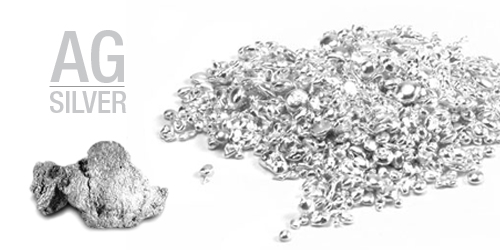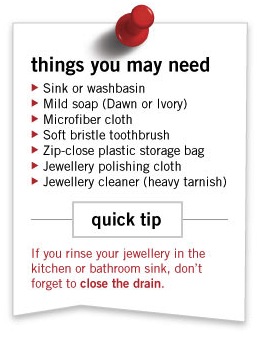 Silver is a precious metal valued for it’s white moon-like glow. It’s highly lustrous, versatile and can be polished to bright mirror finish. The whitest of all the metals, silver has been used by primitive man and has gone by many names. “Pale” by the ancient Hebrews. To the ancient Romans it was “Argentum”. But my personal favourite is “tears of the moon” named by native North Americans.
Silver is a precious metal valued for it’s white moon-like glow. It’s highly lustrous, versatile and can be polished to bright mirror finish. The whitest of all the metals, silver has been used by primitive man and has gone by many names. “Pale” by the ancient Hebrews. To the ancient Romans it was “Argentum”. But my personal favourite is “tears of the moon” named by native North Americans.
Copper or gold are often mistaken as the most conductive metals – but it’s actually silver. It has the highest electrical conductivity of all metals, so it can be found in electronics and it’s used in many other industries. Silver is a very versatile metal and it’s often used as an alloy. 22k gold is 91.7% gold and 8.3% silver and sometimes other metals.
I found this excerpt about the origins of silver and how it’s created, which I think is absolutely amazing.
“Silver is produced from lighter elements in the Universe through the r-process, a form of nuclear fusion believed to take place during certain types of supernova explosions.*”
Medicinal uses of Silver
Silver has antibacterial properties and was used for medicinal purposes before the discovery of antibiotic drugs (such as Penicillin). Medical devices were coated in silver to make them resistant to bacteria. Silver coins used to be placed in barrels of water and wine to act as a disinfectant, and in ancient Persia water was boiled in silver flagons to make it potable. Before refrigeration was invented pioneers in the U.S. would place a silver dollar into a container of milk to keep it fresh. Antiseptics preparations and dressings contained silver compounds, and topical creams used colloidal silver. It was used in one form or another to treat infectious wounds, burns, ulcers, and in some cases even taken internally to treat the common cold.
Silver has resurfaced recently as an alternative medicine and homeopathic remedy for numerous issues. Modern silver containing foam is being tested and has shown to reduce wound size and odour. Colloidal silver has been revived as being an essential mineral supplement and treatment for illnesses such as cancer, diabetes, herpes, tuberculosis, and others. But none have been proven to be effective. Compounds containing Silver Sulfadiazine have been used successfully as a germicide and disinfectant.
The use of silver in clothing and in fabric for items such as socks, shoes and active-wear is an effective way to control odours, since it inhibits the growth of fungus and bacteria.
Silver in History
There has been evidence found at stone age sites showing that prehistoric man was starting to learn metallurgy. Remains have been found in ashes and around ancient fire pits. Silver has been used for numerous things across the ages but most commonly as currency, utensils, art, and for ornamentation since the bronze age, around 4000 BC. In ancient Egypt and Medieval Europe was silver has highly priced and worth more than gold. While it became coined and used as money as early as 700BC, both the Chinese and Roman empires used silver primarily as currency even before then.
Silver jewellery throughout history is deeply steeped in mystery, magic and myth. Most silver jewellery today is actually a sterling silver alloy made with copper to increase it’s durability and scratch resistance.
10 strange facts about silver
- Experiments have been done using silver iodide. Scientists are seeding clouds with it in attempts to produce rain.
- Silver is more reflective than gold.
- The bearings used in jet engines are made of silver, apparently they provide superior performance.
- Silver nearly reflects all visible light, which is why high-end mirrors are coated with it. Cheaper mirrors are backed with aluminum.
- Since silver has antibacterial and anti-fungal properties, paper is being infused with it and used in the medical community.
- Long life batteries used in quartz watches and digital cameras use silver oxide-zinc batteries.
- About fourteen languages use the same words for ‘money’ and ‘silver’.
- Silver used to be used by dentists to fill cavities.
- Silver is harder than gold, but silver has a lower melting point.
- While it’s not advised to eat silver it’s been used to decorate baked goods, and in Europe it’s found in some food colouring.
* http://en.wikipedia.org/wiki/Silver


